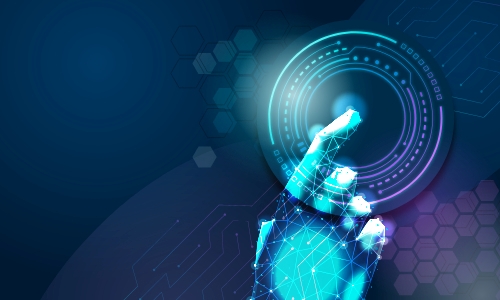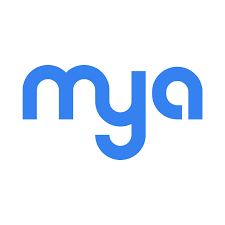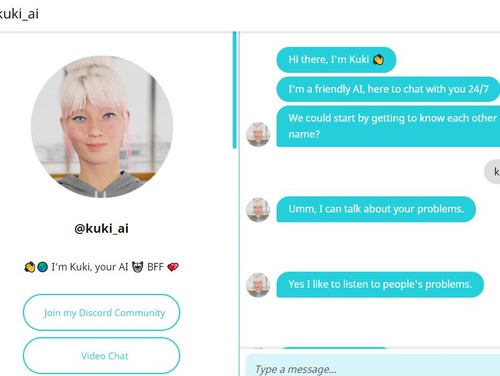Keyword Recognition-Based Chatbots: Essential for Businesses
In today's digital world, where customer expectations continue to rise, it's important to stay one step ahead. Gone are the days of long response times and frustrated customers. Discover the transformative potential that keyword-based chatbots can bring to your business.

Don't miss your chance to use this cutting-edge technology to gain a competitive advantage. Discover the many benefits of chatbots and learn how they can streamline operations, improve customer experience, and drive business growth. Read on to discover the full potential of these must-have digital assistants.
- Part 1: What Is Keyword Recognition-Based Chatbot
- Part 2: How Does Keyword Recognition-Based Chatbot Works
- Part 3: Why Businesses Need Keyword Recognition-Based Chatbots
- Part 4: How to Propel Your Business with Keyword Recognition-Based Chatbots
- Part 5: Examples of Keyword Recognition-Based Chatbots
- Part 6: Extra Tip: Suitable Business Chatbots: More than Just Recognition-Based
What Is Keyword Recognition-Based Chatbot
A keyword recognition-based chatbot is a computer program that uses artificial intelligence and automatic language processing to understand user requests and respond automatically.
This type of bot is designed to interact with users through conversational interfaces such as natural language instant messaging. These robots are able to replicate the patterns entered into the system, which have been continuously improved over the years.
Keyword extraction is a technique used in chatbots to extract relevant information from user queries. The chatbot's algorithm analyzes the user's query and tries to identify these keywords in order to provide an appropriate response.
In a conversation with a chatbot, users can use certain keywords to ask questions or give directions. For example, a user might ask What's the best restaurant in my town? The chatbot will use the keywords "best" and "restaurant" to provide a list of recommended restaurants.
How Does Keyword Recognition-Based Chatbot Works
Chatbots can use pre-trained models or machine learning algorithms to improve understanding and response. Conversational bots based on keyword recognition are widely used in many applications including e-commerce, search engines, mobile applications, and instant messaging platforms such as Facebook Messenger.
These bots can be used to provide effective customer support by answering frequently asked questions and helping users find relevant information. With relevant keywords and language processing algorithms, chatbots can also be used in digital marketing.
For example, it can be programmed to answer customer questions about your company's products and services and direct them to relevant pages on your website.
Keyword recognition-based chatbots can be designed using specific tools and frameworks. For example, WordPress offers plugins for creating chatbots for websites. Developers can also use automated natural language processing libraries, such as Python's NLTK, to encode keywords and determine appropriate responses.
Since they automatically understand and respond to user questions, they allow for instant, personalized interactions. Conversational chatbots can also be used to collect data and analyze user information, which can help businesses better understand and target customers.
Why Businesses Need Keyword Recognition-Based Chatbots
Humans often become impatient or frustrated with clients; chatbots do not. Keyword recognition-based chatbots not only save businesses on customer care representatives, but they can also reduce employee workload by responding directly to each inquiry from customers around the clock - meaning more can be addressed at one time than with human agents alone.
Also, they can be trained to recognize certain keywords in customer queries. So when someone types "Where is your store?", the chatbot will understand and automatically provide the appropriate answer. This feature helps companies reduce errors caused by human staff misinterpreting what consumers ask or forgetting essential details when answering.
On the other hand, these machines can record and analyze consumer feedback to enhance the quality of goods or services and their websites. They assist companies in recognizing problems encountered during client purchase processes and providing data that allows them to address these concerns immediately.
They allow companies to expand their customer base while providing expert advice and solving queries without needing human employees on staff. So, businesses can improve their marketing strategy and better engage their consumers.
How to Propel Your Business with Keyword Recognition-Based Chatbots
To propel your company into the digital age and improve your customer relations, the use of chatbots based on keyword recognition can prove to be an effective marketing strategy.
By intelligently harnessing these conversational tools with artificial intelligence, you can build customer loyalty, attract new prospects and revolutionize the way companies engage with their customers.
By analyzing virtual conversations with your chatbots, you can also collect valuable customer data to better understand them and personalize your offers.
Chatbots greatly help companies to manage a high volume of requests simultaneously, relieving human support teams of their workload so that they can concentrate on more complex requests, enabling companies to maximize customer service while reducing expenses.
Keywords enable chatbots to respond appropriately to users and change focus accordingly, providing accurate answers even if users make typos or use unfamiliar terms when asking for help.
Examples of Keyword Recognition-Based Chatbots
Now let's take a closer look at some of the best keyword recognition-based chatbots on the market.
Mya System
Mya is a chatbot designed to facilitate the recruitment process.
Mya interviews candidates via the main social networks - Facebook Messenger, Skype, and, for some time now, LinkedIn. It asks them questions about their experience, checks their skills, and answers their questions about the hiring company.
According to one analysis, the chatbot enables recruiters to gain 144% in productivity and increase the rate of completed applications to 93%.

Lara
Lara is a dating chatbot developed by the famous French dating site Meetic. She communicates with users to help them find their significant other. She proposes solutions to make users' profiles more interesting, matches compatible couples, and gives advice to singles.

Kuki
Kuki is an emotionally intelligent robot capable of communicating in the most human way possible, even with a touch of humor. This chatbot is available on platforms such as Telegram, Facebook Messenger, and Kik Messenger.

Extra Tip: Suitable Business Chatbots: More than Just Recognition-Based
Keyword recognition-based chatbots offer more sophisticated services than menu or button-based chatbots, as they allow users to interact freely with them via free text rather than selecting options from a list. There are several other categories of chatbots.
Menu/Button-Based Chatbots
These basic chatbots take the form of a menu or button, offering customers options and responding accordingly. These types of bots are effective for answering simple customer queries about products or services, such as their location or cost.
Contextual Chatbots
These are basic chatbots that don't require the application of artificial intelligence since they operate on the basis of commands. They use predefined questions and follow sequential logic, emulating a conversation from a previously established menu of options.
Voice Chatbots
These are simply chatbots capable of communicating by audio voice. It is often equipped with artificial intelligence that listens to you and submits a precise audio response.
Social Messaging Chatbots
Given that chatbots are a valuable aid to customer service, it's no wonder that these virtual assistants have taken social networks by storm.
If you want to optimize your presence on social platforms, consider including a chatbot in your strategy. These Chatbots are often found on networks such as Facebook Messenger and Skype.
Keyword Recognition-Based Chatbots vs. Knowledge Base Chatbots
Keyword Recognition-Based Chatbots and Knowledge Base Chatbots represent two distinct approaches to chatbot technology, each with unique characteristics and applications.
Comparison and Conclusion3>
- Flexibility: Knowledge Base Chatbots are more flexible and adaptable to a variety of situations, while Keyword Recognition-Based Chatbots are more rigid.
- Development and Maintenance: Keyword Recognition-Based Chatbots are simpler and less costly to develop and maintain, whereas Knowledge Base Chatbots require more resources.
- User Experience: Knowledge Base Chatbots often provide a richer and more satisfying user experience due to their advanced capabilities, but they might be overkill for simpler tasks where a Keyword Recognition-Based Chatbot would suffice.
ChatInsight.AI is a knowledge base chatbot designed to provide users with detailed, accurate, and contextually relevant information across a wide range of topics. Unlike standard chatbots that primarily rely on predefined responses, ChatInsight.AI utilizes a vast repository of up-to-date information and advanced AI algorithms to understand and respond to user queries in a more insightful manner. This approach enables it to offer more in-depth and nuanced answers, making it a valuable tool for research, learning, and solving complex queries.
The AI's capabilities include synthesizing information from various sources, analyzing data, and even generating predictions or suggestions based on the context of the inquiry. This makes ChatInsight.AI particularly useful in educational, professional, and personal research scenarios, where accurate and comprehensive information is crucial.
Conclusion
Your choice of a chatbot for your business will depend on its needs. If you want to enhance customer experiences, streamline internal processes, or remove productivity roadblocks with conversational robots - they help foster consumer relationships more intimately than email exchanges while eliminating frustrations that often accompany human-centric communications.








Leave a Reply.